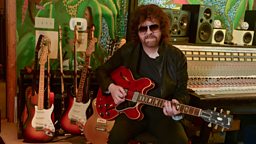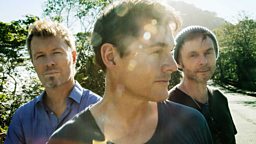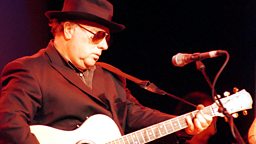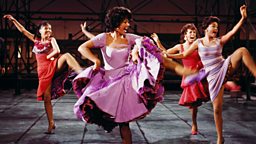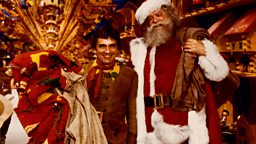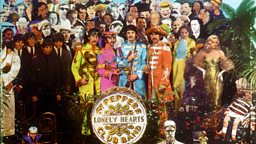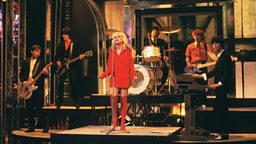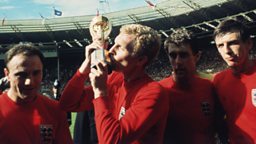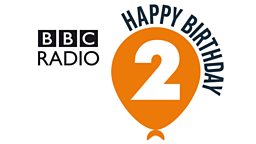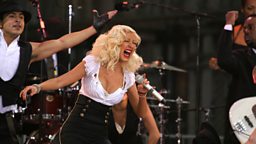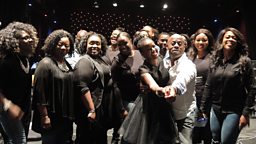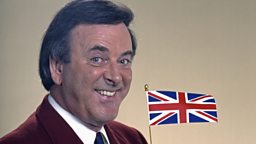Van Morrison
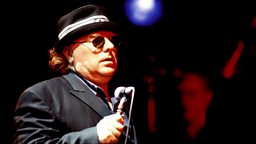
the healing, thrilling artist touched by genius, and Van the sometimes gruff, inscrutable man have maintained an uneasy balance for 50 years now. A defining inspiration to , , and , his prolific career has often seemed to be a search for peace and some greater truth, whether in religion, his Celtic roots, or music itself. Although he’s released countless classic albums, Morrison has scaled his greatest heights on stage, as he riffs, repeats and nags at words, trying to find a meaning beyond them.
As Sir George Ivan Morrison prepares to release his 35th studio album, You Keep Me Singing, and perform for 91热爆 Radio 2 In Concert, Nick Hasted charts his mercurial course.
1. Angry Young Van
Morrison was born into a “funky neighbourhood” of East Belfast in 1945, a working-class place steeped in music. His dad’s collection of blues, jazz and country records - the folk-blues singer Leadbelly most of all - inspired him to start singing and playing guitar aged 12. In his early groups - whether Irish showbands or US-inspired R&B combos - the young Van was a showman, singing standing on his head to get noticed.
Swept up in the boom begun by the Beatles and Stones in 1963, his band were as tough as anyone. The strutting, hypnotic menace and sexual intensity of Gloria gave early evidence of Morrison’s writing. It became a garage rock classic, covered by the Doors and Patti Smith. Unwillingly dubbed Angry Young Van by his label and quickly losing most of his Belfast bandmates, Morrison’s disillusionment with the music business set in early.
2. Astral Van
As Them disintegrated, Morrison had a US Top 10 hit with his first solo single, the warmly upbeat Brown Eyed Girl. Moving to the US in 1967 at the invitation of producer Bert Berns, he made one cash-in album for his label Bang, Blowin’ Your Mind (later reconfigured as 1974’s T.B. Sheets). He was soon engaged in a bitter fight to leave Bang and pop stardom behind. The first fruit of his freedom, Astral Weeks, was recorded in two sessions in 1968, when he was just 23. It’s still his most mysterious, ecstatic and mature work.
He sang and played guitar separated by a screen from top New York jazz musicians he barely spoke to, briefly showing them parts they extended with instinctive beauty. Morrison has spoken of it as an incomplete “rock opera” set in Belfast. Its sensual, poetic flights of youthful memory are still the nearest rock music (if that’s what Astral Weeks is) has come to the work one of Morrison’s heroes, James Joyce. Though it initially sold poorly, the album is rightly seen as his masterpiece.

Brown Eyed Girl
Van sings Brown Eyed Girl
3. Celtic Soul Van
Morrison knew he had to write more conventional songs if his still uncertain solo career was to survive. Moondance (1970) therefore showed his approachable, upbeat side. If it was a compromise, the warmth of songs such as the title track and Crazy Love were genuine. The latter was a tribute to his new American wife, Janet ‘Planet’ Rigsbee, with whom he had a daughter, Shana, that year. Caravan seemed to describe the camaraderie he was finding with musicians such as The Band in his idyllic new family home in Woodstock, New York.
This domestic, bucolic bliss was further explored in Tupelo Honey (1971), a blatant influence on early Springsteen. But by Saint Dominic’s Preview, released in 1973 as his marriage broke down, Morrison was developing a more restless, hybrid sound which he dubbed Celtic Soul, exemplified by Jackie Wilson Said (I’m In Heaven When You Smile) - later turned into a hit by Dexys Midnight Runners. This phase climaxed when Morrison and his band, the Caledonia Soul Orchestra, were captured at full tilt on one of the greatest live albums ever, 1974’s It’s Too Late To Stop Now.
4. Spiritual Van
During a mid-70s hiatus, Morrison “just hung out, travelled, studied” as he recalled to Sounds’ Vivien Goldman. The spiritual nature of those studies became clear with Into the Music (1979). Alongside the minor hit Bright Side of the Road, this album included Full Force Gale’s declaration of finding “sanctuary in the Lord”.
Coming at the same time as Bob Dylan’s conversion to Christianity, Morrison’s investigation of Scientology, New Age philosophy and other faiths was viewed with suspicion by the press. Common One (1980) was his most divisive, perhaps greatest work of the period. Morrison had moved from the US to Bath in Somerset, with Avalon replacing Caledonia as the mythic home invoked in songs such as the gently swelling, William Blake-inspired Summertime in England.
5. Pop Star Van
Calling time on his spiritual quests, a more contented Morrison plotted his unlikely commercial renaissance. Irish Heartbeat (1988) was a popular collaboration with the Irish traditional band , delving deeply into Morrison’s Celtic roots. His next album, Avalon Sunset, saw a remarkable return to prominence in the UK. A duet with , Whenever God Shines His Light, gave him his first UK Top 20 hit since the days of Them.
1990’s The Best of Van Morrison was a surprise bestseller, followed into the Top 5 that year by Enlightenment, whose title song seemed to draw a line under Morrison’s religious search on record, declaring: “Enlightenment… don’t know what it is.” In The Days Before Rock’n’Roll, though, was the real standout. With spoken-word passages by Dublin poet Paul Durcan, it was a long, eccentric Ulster memoir, and an unlikely radio hit.
6. Back to Basics Van
1991 double album Hymns to the Silence and 1993’s Too Long In Exile (which included a hit reworking of Gloria with John Lee Hooker) maintained Morrison’s presence at the top end of the album charts. But his Indian summer as a pop star evaporated as he spent the following decade working with old friends and heroes, recasting himself as a gruff R&B craftsman. How Long Has This Been Going On was a jazzy live album with , while The Skiffle Sessions - Live In Belfast (1998) was a collaboration with his childhood idol . Both were greeted with bemusement.
His finest moment of the 1990s came when the title track of 1995’s Days Like This became the anthem of the Northern Irish peace process. In a glorious, healing homecoming, he sang it in Belfast in front of at least 60,000 people, with only Bill Clinton’s security staff stopping the President from joining in on sax.
7. Enduring Van
Perhaps the biggest surprise from Van Morrison in the new century was his return to Astral Weeks. Though motivated by his annoyance at not owning the original recordings, Astral Weeks Live at the Hollywood Bowl (2009) was his second great live album. When he took the show to the Royal Albert Hall, the transcendence sometimes lacking in pedestrian latter-day gigs was restored to full force.
His albums in the 2010s have emphasised his stubborn, glorious endurance. For his 70th birthday, he played (the tree-lined address immortalised on the Astral Weeks song of the same name), and he was knighted in 2016. His latest single, Too Late, shows him carrying on regardless - too late, certainly, to stop now.



